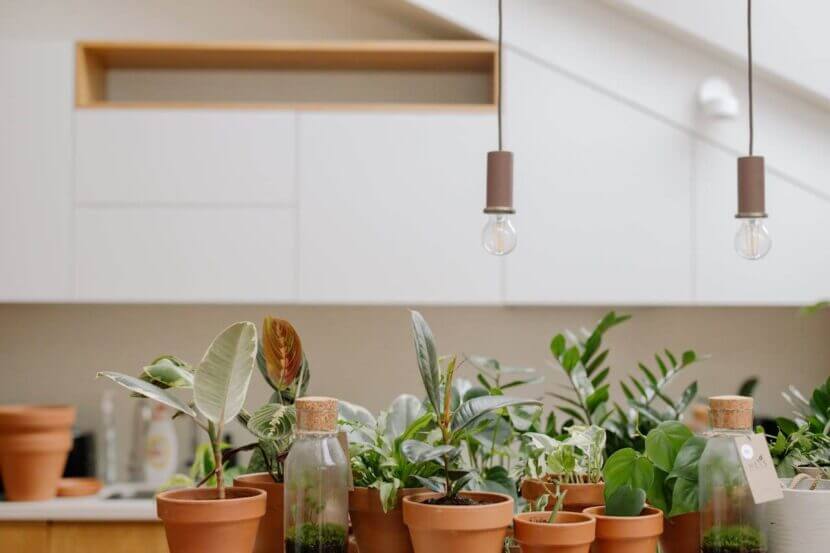The kitchen is the heart of every home – a place where people not only cook, but also live. For passionate amateur chefs and design lovers, it is far more than just a functional room. Rather, it is the focal point for culinary creations and the expression of a lifestyle. But how does the design of the kitchen actually influence your diet? A well-designed kitchen can do much more than just look good – it can also positively change your eating habits.
Kitchen planning: function meets aesthetics
The first step towards a healthy kitchen starts at the planning stage.
A clever room layout that optimizes the cooking flow is essential.
Imagine your kitchen as a work triangle where the distances between the fridge, sink and hob are kept as short as possible.
This layout not only makes cooking easier, but also promotes healthier eating habits by making it easier to access fresh ingredients and prepare healthy meals.
The choice of materials also plays an important role.
Surfaces made from natural materials such as wood or stone not only create a pleasant ambience, but also have an antibacterial effect and are easy to clean.
Well thought-out lighting – both functional and atmospheric – ensures that the entire room is well lit, making it easier to prepare food and creating an inviting atmosphere at the same time.
Order and overview: the key to a healthy diet
A tidy and well-organized kitchen automatically promotes healthier choices.
If all utensils and ingredients have their fixed place, it is much easier to reach for healthy foods.
Open shelves or glass doors on the cupboards can work wonders here: they provide a quick overview and motivate you to reach for fresh ingredients more often.
A well-stocked storage system is also crucial.
Use clear containers to store dry foods such as cereals, nuts and pulses.
These are not only visually appealing, but also remind you to opt for healthy alternatives instead of reaching for unhealthy snacks.

Appliances and technologies: supporters for healthy cooking
Modern kitchen appliances can make a significant contribution to making healthy eating easy.
A high-quality steamer or slow cooker allows you to prepare meals that are rich in nutrients and retain their natural flavor.
A powerful blender for smoothies or a juicer are also valuable aids for integrating your daily portion of fruit and vegetables.
Technologies such as smart fridges that tell you when your fresh ingredients need to be used up, or apps that make recipe suggestions based on what you have in stock, provide additional support for the health-conscious cook.
Ergonomics and comfort: for a sustainable cooking experience
A healthy kitchen is not only functional, but also ergonomically designed.
The height of the work surfaces should be adjusted to prevent back pain.
A comfortable, well-lit workstation also helps to ensure that cooking is not a chore but a relaxing activity.
Ergonomic handles on cupboards and drawers make it easier to access frequently used utensils, and seating near the cooking area invites children and guests to linger and experiment.
Another important aspect is the air quality in the kitchen.
A good extractor hood or a window near the stove is essential to minimize vapours and odours that arise during cooking.
Fresh air not only contributes to your well-being, but also ensures that you enjoy spending time in your kitchen and prepare healthy dishes more often.
Aesthetics and inspiration: the influence of kitchen furnishings on your cooking habits
You eat with your eyes – this proverb applies not only to the dish served, but also to the environment in which it is prepared.
An aesthetically pleasing kitchen inspires people to try out new recipes and be creative.
Choosing colors that radiate freshness and naturalness – such as shades of green reminiscent of fresh vegetables or warm wood tones – can enrich the cooking experience and increase the desire to eat healthily.
Even small design elements such as a herb wall that keeps fresh herbs within reach or a fruit basket as a central decorative element on the worktop can make access to healthy food easier and visually appealing.
The right kitchen design goes far beyond choosing beautiful furniture and appliances.
It creates the foundation for healthy eating by simplifying the cooking process, supporting healthy choices and providing an inspiring environment.
For passionate amateur chefs and design enthusiasts, the kitchen is more than just a room – it is the place where the love of good food and good design merge and lay the foundation for healthy living.

Related posts:
Tidiness in the kitchen: how to make the kitchen a feel-good place
Artificial intelligence in the kitchen: cooking of the future
What countertop for the kitchen?













